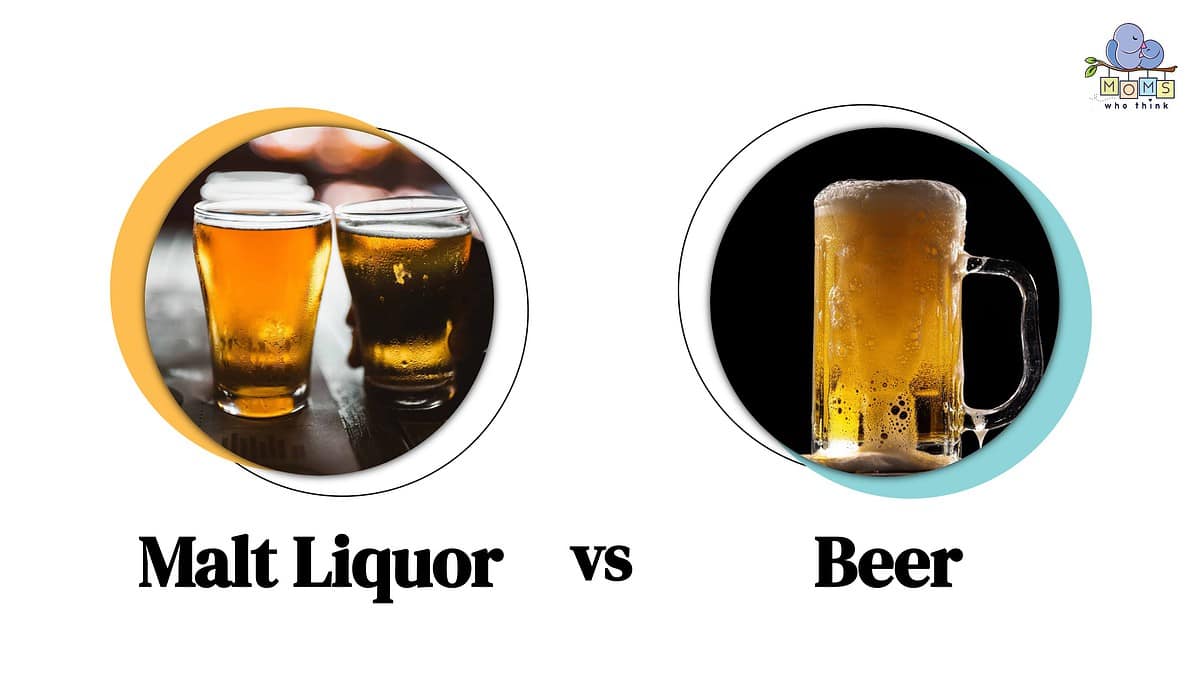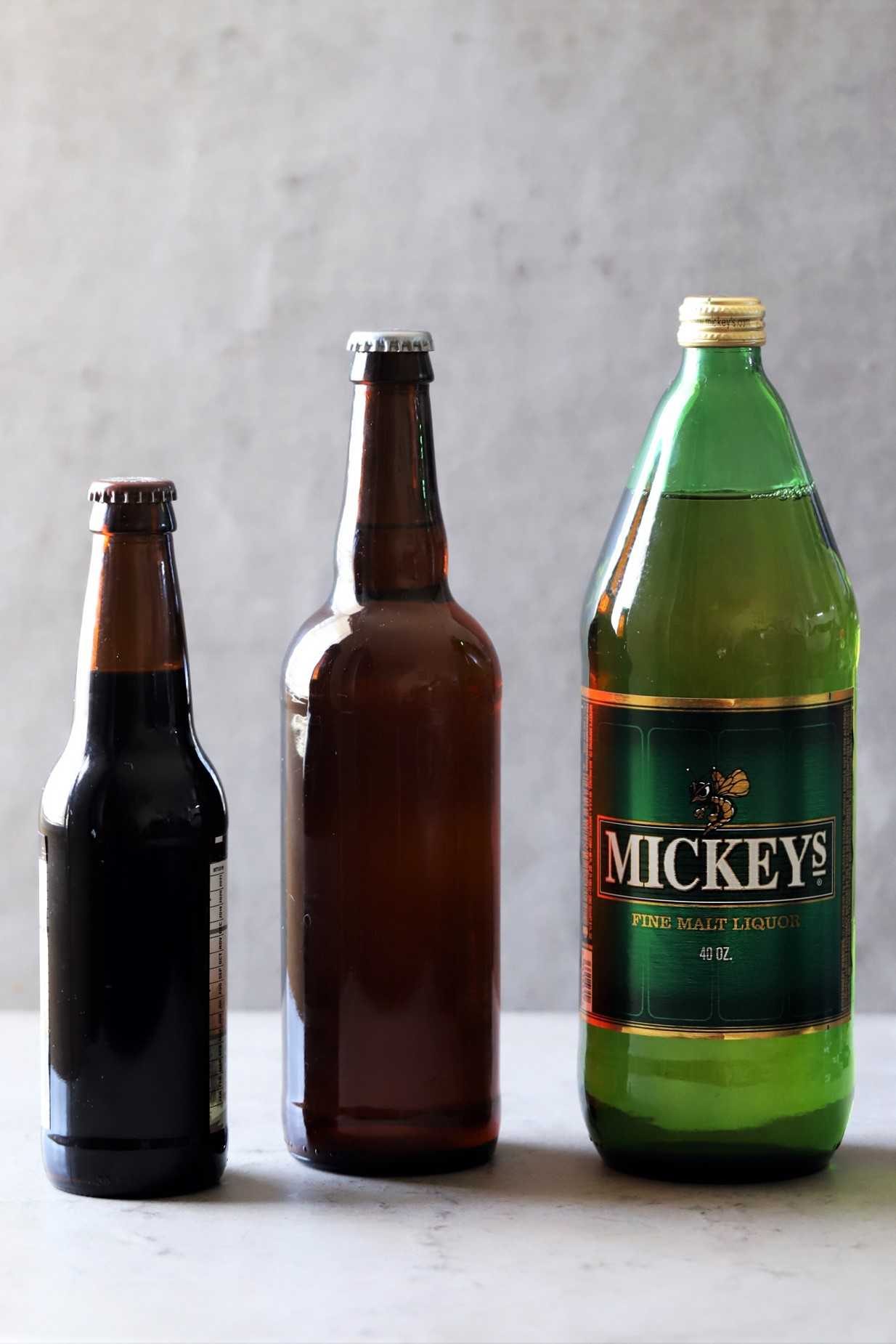Introduction To Malt Liquor Vs Beer

Malt liquor and beer are both popular alcoholic beverages, but they have some key differences in terms of brewing techniques, ingredients, and flavors. While beer typically has a moderate alcohol content and a wide range of flavors, malt liquor is known for its higher alcohol concentration and robustness. Understanding these brewing differences can help individuals make informed choices based on their preferences and occasions. In this article, we will explore the ingredients used, the brewing process, and the distinctive flavors and characteristics of malt liquor versus beer.
Overview Of Malt Liquor And Beer
Malt liquor and beer are both popular alcoholic beverages with distinct characteristics. Malt liquor is known for its higher alcohol concentration, typically ranging from 6% to 12% ABV, while beer usually has a lower alcohol content, typically between 3% and 7% ABV. Malt liquor is brewed from a combination of malted barley and other grains such as corn, which give it a robust, full-bodied flavor. On the other hand, beer is brewed primarily from malted barley, resulting in a wide range of flavors and styles, from light and crisp lagers to rich and flavorful ales.
Key Brewing Differences Between Malt Liquor And Beer
Malt liquor and beer differ in their brewing processes, leading to distinct characteristics. The key differences lie in the ingredients, fermentation, and aging methods. Malt liquor is brewed with a higher proportion of fermentable sugars and a combination of malted barley, corn, or rice. This results in a higher alcohol content and a fuller, robust flavor. Beer, on the other hand, is mainly brewed with malted barley and undergoes a fermentation process that produces a wide variety of flavors and styles. Additionally, the aging process for malt liquor is often longer, contributing to its unique characteristics and higher alcohol content.
Ingredients Used In Malt Liquor And Beer

Malt liquor and beer both use a combination of ingredients, but there are some variations between the two. Malt liquor typically includes malted barley, corn, or rice, which contribute to its distinct flavor and higher alcohol content. In contrast, beer primarily utilizes malted barley along with hops, water, and yeast. The malted barley provides the base for the fermentation process, while the hops add bitterness and aroma. The choice of ingredients plays a crucial role in determining the taste, aroma, and alcohol content of both malt liquor and beer.
Malt Liquor Ingredients And Their Impact On Flavor
Malt liquor, known for its distinct flavor profile, is influenced by its specific ingredients. The use of malted barley, corn, or rice in the brewing process contributes to its unique taste. Malted barley provides a malty and sweet flavor, while corn or rice can add a lighter and smoother quality. The combination of these ingredients gives malt liquor its characteristic sweetness and complexity. The higher alcohol content in malt liquor also intensifies the flavors, resulting in a robust and flavorful beverage. Ultimately, the choice of ingredients plays a crucial role in shaping the flavor profile of malt liquor.
Beer Ingredients And Their Significance In Brewing Process
Beer is crafted using a combination of key ingredients, each with its own significance in the brewing process. Malted barley serves as the primary source of fermentable sugars, providing the basis for alcohol production. Hops, on the other hand, contribute bitterness, flavor, and aroma to balance the sweetness of the malt. Yeast plays a crucial role in fermentation, converting sugars into alcohol and carbon dioxide. The type of yeast used can greatly influence the flavor profile of the beer. Water, often overlooked, is essential for dissolving and extracting the ingredients and affects the overall character of the final product. Together, these ingredients create the diverse range of flavors and styles found in beer.
Brewing Process Of Malt Liquor

The brewing process of malt liquor involves several key steps to create its unique characteristics. First, the malted barley is crushed to release its sugars. This malt is then mixed with hot water in a process called mashing, allowing the enzymes to convert the starches into fermentable sugars. After mashing, the liquid, known as wort, is separated from the grains and transferred to a large kettle. Here, hops are added to provide bitterness and flavor. The wort is then boiled, sterilized, and cooled before yeast is introduced for fermentation. The resulting beer is typically aged to allow flavors to develop before being packaged and consumed.
Detailed Steps In Brewing Malt Liquor
In brewing malt liquor, the process begins with crushing malted barley to release its sugars. The crushed malt is then mixed with hot water in a process called mashing, which allows enzymes to convert starches into fermentable sugars. After mashing, the liquid, known as wort, is separated from the grains and transferred to a large kettle. Hops are added to provide bitterness and flavor to the wort, which is then boiled, sterilized, and cooled. Finally, yeast is introduced for fermentation, converting sugars into alcohol and carbon dioxide. The resulting malt liquor is then aged to enhance its flavors before being packaged and enjoyed.
Fermentation And Aging Process Of Malt Liquor
After the brewing process of malt liquor, the next step is fermentation. The wort, which is the liquid extracted from the mashing process, is transferred to fermentation vessels. Yeast is then added to the wort, and fermentation begins. During fermentation, the yeast consumes the sugars in the wort and converts them into alcohol and carbon dioxide. This process usually takes about one to two weeks, but it can vary depending on the specific recipe and desired flavor profile. After fermentation, the malt liquor is aged for a period of time to allow flavors to develop and harmonize. This aging process can range from a few weeks to several months, and it contributes to the final taste and characteristics of the malt liquor.
Brewing Process Of Beer

The brewing process of beer involves several key steps. First, the grains, usually barley, are malted and crushed to release their sugars. These sugars are then mixed with hot water to create a mixture called the mash. Enzymes in the malted barley convert the starches into sugars during a process called mashing. The liquid is then separated from the grains and boiled. Hops are added during the boiling process to add bitterness and aroma. After boiling, the liquid, known as wort, is cooled and yeast is added. Fermentation takes place, during which the yeast consumes the sugars in the wort and produces alcohol and carbon dioxide. The beer is then aged, carbonated, and packaged. The entire brewing process can take several weeks to complete.
Beer Brewing Techniques And Variations
Beer brewing techniques and variations are diverse and dependent on regional traditions and preferences. The most common brewing technique is using malted barley, hops, water, and yeast. However, variations in ingredients and brewing methods result in different beer styles such as lagers, ales, stouts, and porters. Additional techniques like dry hopping, barrel aging, and adding adjunct ingredients like fruits or spices can further enhance flavor profiles. Craft breweries often experiment with unique brewing techniques, resulting in innovative and specialty beers. The variety and creativity in the brewing process contribute to the rich tapestry of beer styles available in the market.
Comparison Of Traditional And Modern Brewing Methods For Beer
Traditional brewing methods for beer involve a step-by-step process that has been used for centuries. This includes mashing the grains, boiling the wort, adding hops for bitterness and aroma, fermenting with yeast, and conditioning the beer. These methods often prioritize simplicity and emphasize the natural flavors of the ingredients.
On the other hand, modern brewing methods for beer have evolved with advancements in technology and scientific understanding. This includes using specialized equipment for more precise temperature control, filtration systems, and automation. Modern methods also allow for experimental techniques like dry hopping, barrel aging, and the use of adjunct ingredients.
While traditional methods are still respected and practiced by craft breweries, modern methods offer greater consistency, efficiency, and innovation in the brewing process. Both approaches have their merits, and beer enthusiasts can enjoy a wide range of styles and flavors from breweries that utilize either traditional or modern methods.
Flavors And Characteristics Of Malt Liquor Vs Beer

Malt liquor and beer have distinct flavors and characteristics that differentiate them from each other. Malt liquor tends to have a sweeter and maltier taste, with flavors ranging from caramel and toffee to corn and grain. It often has a richer and heavier body, with a higher level of carbonation. On the other hand, beer offers a wide variety of flavors and styles, including bitter and hoppy IPAs, malty lagers, and fruity and spicy Belgian ales. Beer can have a lighter or fuller body, depending on the style. The flavors and characteristics of malt liquor and beer provide options for different taste preferences and occasions.
Distinct Flavors And Aromas Of Malt Liquor
Malt liquor offers a unique flavor profile that sets it apart from beer. It has a distinct sweetness with notes of caramel, toffee, and sometimes even hints of vanilla. The maltiness of Malt Liquor adds richness and depth to its taste. Additionally, due to the higher alcohol content, Malt Liquor can have a warming sensation and a boozy flavor. The aroma of Malt Liquor is often described as sweet and malty, with a touch of graininess. These distinct flavors and aromas make Malt Liquor a popular choice for those who enjoy a sweeter and bolder drinking experience.
Variety Of Tastes And Styles Found In Different Types Of Beer
Beer offers a wide range of tastes and styles to cater to various preferences. From light and crisp lagers to hoppy and bitter IPAs, there is something for everyone. Styles such as stouts and porters offer deep and roasty flavors, while wheat beers provide a refreshing and fruity profile. Belgian ales are known for their complexity, with flavors ranging from spicy to fruity. Additionally, specialty beers like sour beers and barrel-aged beers offer unique and experimental tastes. With the multitude of beer styles available, beer enthusiasts can explore and discover their favorite flavors.
Conclusion And Recommendations

In conclusion, the comparison between malt liquor and beer highlights the distinct brewing differences, ingredients, processes, and flavors of these two beloved beverages. Malt liquor offers a higher alcohol content and sweeter taste, making it a popular choice for those seeking a stronger drink. On the other hand, beer provides a wide variety of tastes and styles to cater to different preferences. When choosing between malt liquor and beer, it is important to consider personal taste preferences and the occasion. Whether it’s enjoying a crisp lager on a hot summer day or sipping a malt liquor for a stronger experience, the choice ultimately depends on individual preferences.
Key Takeaways On Malt Liquor Vs Beer Brewing Differences
Malt liquor and beer have distinct differences in their brewing processes and ingredients. Malt liquor is brewed with a mixture of malted barley and corn, while beer is made solely with malted barley. Malt liquor typically has a higher alcohol content compared to beer. These differences result in variations in flavors and characteristics, with malt liquor offering a sweeter taste and beer providing a wider range of tastes and styles. When choosing between malt liquor and beer, it’s essential to consider personal preference and the occasion.
Suggestions For Choosing Between Malt Liquor And Beer Based On Preferences And Occasions
When it comes to choosing between malt liquor and beer, personal preferences and the occasion should be taken into consideration. If you prefer a sweeter taste and higher alcohol content, malt liquor may be the better choice. It is often enjoyed in casual settings and can be a great option for outdoor gatherings or parties. On the other hand, if you appreciate a wider range of flavors and styles, beer offers more variety to suit different tastes. It can be enjoyed in both casual and formal settings, making it suitable for a wide array of occasions. Ultimately, the decision between malt liquor and beer depends on individual preferences and the specific context in which it will be enjoyed.
FAQ About Malt Liquor Vs Beer: Understanding The Brewing Differences
Q: What is the main difference between malt liquor and beer?
A: The main difference lies in the alcohol content and brewing process. Malt liquor typically has a higher alcohol content than regular beer, achieved through the use of special brewing techniques.
Q: How is malt liquor brewed differently from beer?
A: Malt liquor is brewed with a higher proportion of adjuncts like corn or rice, which can contribute to a smoother mouthfeel. Additionally, the fermentation process may differ, resulting in a higher alcohol content.
Q: Are there different ingredients used in brewing malt liquor compared to beer?
A: While both malt liquor and beer use similar ingredients like malted barley, yeast, hops, and water, malt liquor often incorporates a higher percentage of adjuncts like corn or rice to boost fermentable sugars.
Q: Is there a noticeable taste difference between malt liquor and beer?
A: Malt liquor can have a sweeter, heavier taste compared to traditional beers, often due to the higher alcohol content and additional adjuncts used in the brewing process.
Q: Are there any misconceptions about malt liquor that need to be clarified?
A: One common misconception is that malt liquor is of lower quality than beer. In reality, malt liquor is simply a different style of beer with a higher alcohol content, appealing to those who prefer a stronger brew.

Looking for a bar to make your new local hangout? Look no further than Smokin’ Cues, a hidden gem located in the heart of Stockbridge, GA. At our bar & restaurant, we’ve got you covered when it comes to a great time!
Come hear some great live music, catch some sports, have a few drinks, or just sit back and relax! At our pool hall, there’s always something to do.